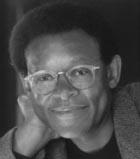 Here is a final reflection inspired by James Cone (and yes, these have been pictures of the man himself).
Here is a final reflection inspired by James Cone (and yes, these have been pictures of the man himself).
So what color is Jesus today?
Jazz is all about the moment. Moments that may or may not be reproduced. Jazz is about playing the same song a new way each time because of the convergence of the audience, band, and any number of other factors. The same is true with jazz theology.
James Cone said that Jesus was black in 1975. His reasoning was as follows, "If we assume that the Risen Lord is truly present with us as defined by his past history and witnessed by Scripture and tradition, what then does his presence mean in the social context of white racism? If Jesus’ presence is real and not docetic, is it not true that Christ must be black in order to remain faithful to the divine promise to bear the suffering of the poor?"
But that was then and this is now. Cone wrote those words in 1975. Classical theology says, once a proposition, always a proposition. Jazz is different. Cone realized that the song he was playing was but for a moment of convergence that would pass away. In the midst of his case for the blackness of Jesus he said this, "Of course, I realize that ‘blackness’ as a christological title may not be appropriate in the distant future or even in every human context in our present."
And so I ask, Has that "distant future" arrived? Has Jesus ceased to be black? Has the condition of black people changed significantly in the last 20 years so that we can move on to a different color or a different question all together? In the words of James Cone we must always be asking, "Who is Jesus Christ for us today?"
(Please forgive me for not playing fair. To ask all the quesitons and not disclose one’s own answers is to sit in the seat of power. In my next post I’ll give my answer as to what color I think that Jesus is today.)
(quotes taken from "God of the Oppressed" by James Cone)

